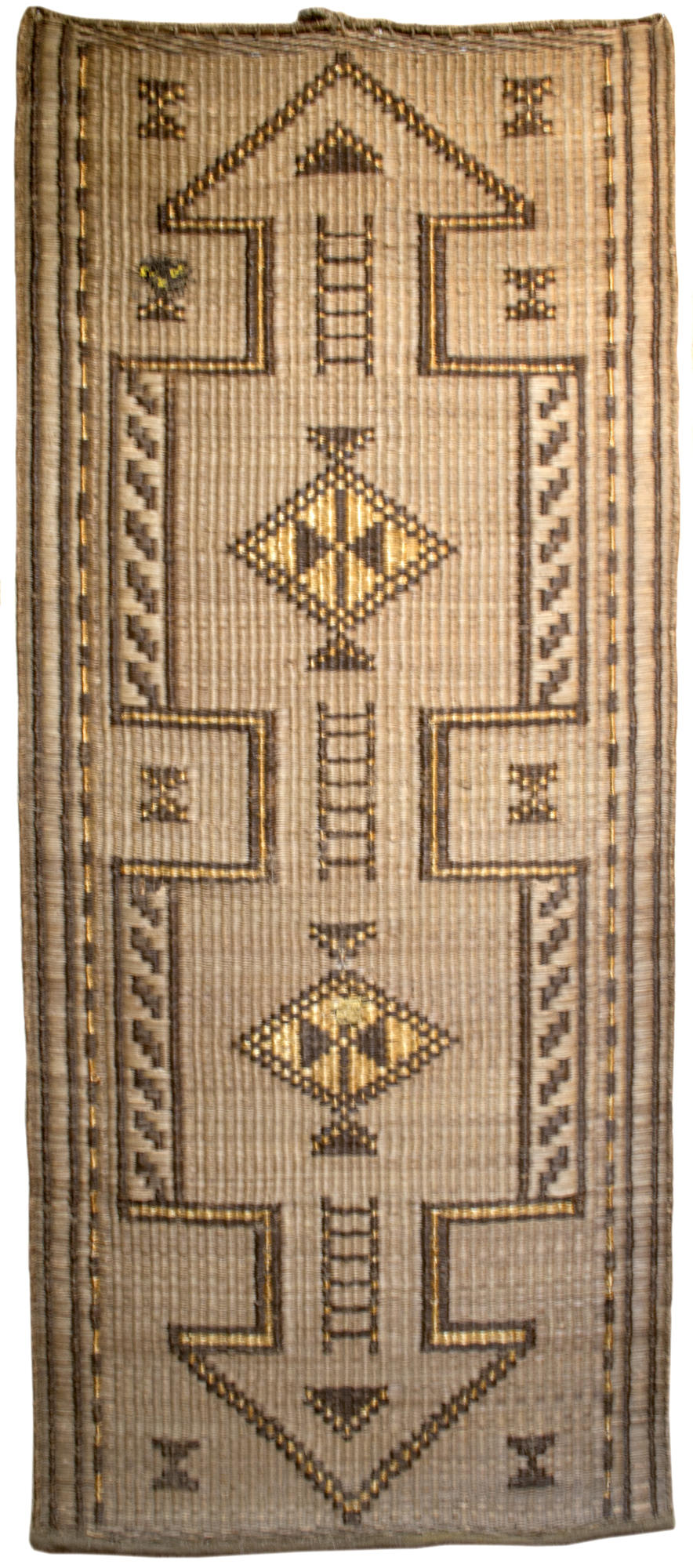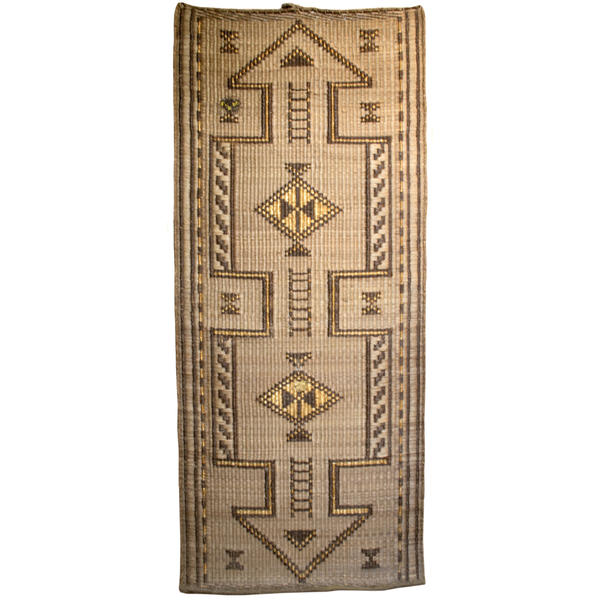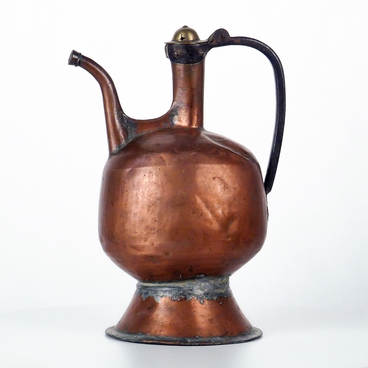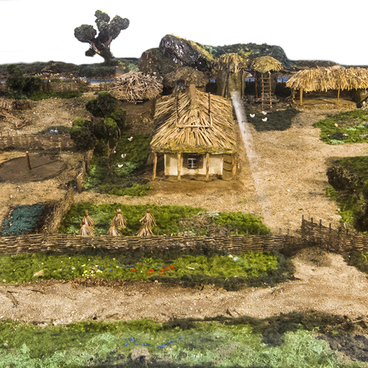Mats were plaited using a wooden frame with fixed cords, which passed through a crosspiece. Cattail threads were interlaced through the cords and fastened by the crosspiece.
P’uabley ornaments of were symmetrical as they were formed by plant threads alternating in various successions. They mostly comprised simple geometric figures featuring family symbols, household items, animals and other compositions.
Traditional Adyghe mats performed diverse functions. They could be used as interior decorative wall panel pictures and palases on which arms or musical instruments hung; they were also laid on the floor. Adyghe children slept on hard wooden beds covered with p’uabley in order to develop upright bearing. There were also different mats used by women in cooking and special mats for praying, namazlyk. Specific proportions and ornamental elements were characteristic of different types of p’uabley.
The Adyghes observed numerous rites associated with mats. Thus, the bride had to plait three p’uabley for her wedding herself, by which her skill and craftsmanship were assessed. Also, the Circassians believed that the soul of the deceased would be tormented if somebody else’s p’uabley was borrowed for the funeral.
Nowadays, mat making is no longer widespread, and mats are plaited by just a few masters who cherish their craftsmanship and handing it on to their apprentices.



